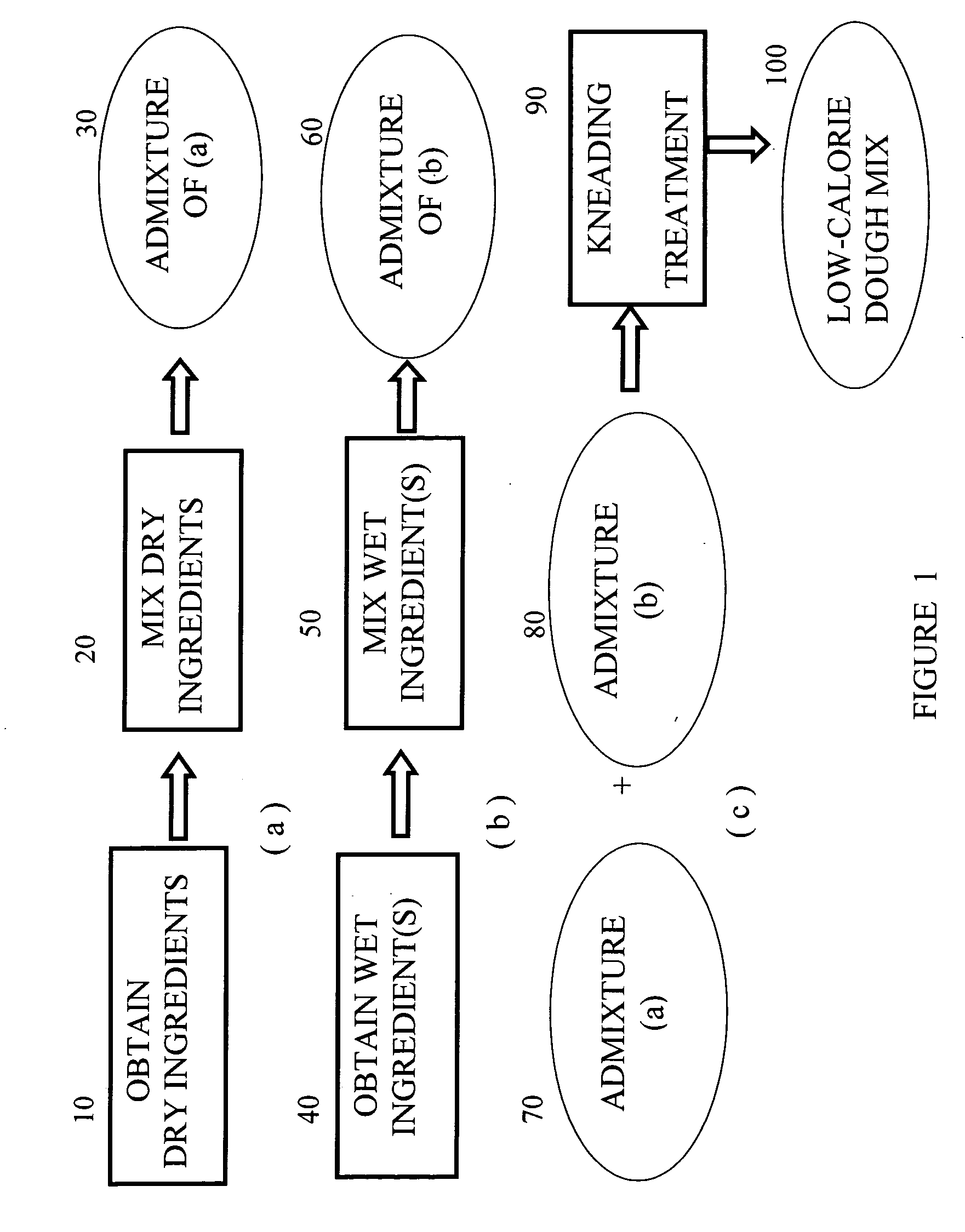Low-calorie foods and process of making the same
a low-calorie, food technology, applied in the field of low-calorie or diet food design, can solve the problems of affecting the physical or chemical properties of dough and baked products, affecting the health of people, and largely limited success in diet soda products, etc., to achieve sufficient calories and be palatable
- Summary
- Abstract
- Description
- Claims
- Application Information
AI Technical Summary
Benefits of technology
Problems solved by technology
Method used
Image
Examples
example 1
[0040] EXAMPLE 1 of the invention is a very low-calorie donut. It is arguably the most complex and difficult to make of the examples provided in this disclosure, but it has the benefit of containing several different aspects of the invention in one food product. EXAMPLE 1 results in a caloric reduction of approximately 92% (as compared to its regular non-diet counterpart). In addition to the cellulose-based dough, there are two optional additional novel components of (1) the cellulose-based filling, and (2) the erythritol-based enrobing glaze. The composition for the low-calorie cellulose-based dough is listed in Table 1.
TABLE 1Low-Calorie Donut Excluding Glazeand Filling, Dry and Wet MixIngredientIngredient dry weightalpha cellulose fiber, 90-micron mesh100.0% finely ground psyllium husk15.0% baking powder4.8%xanthan gum2.5%dried egg whites4.2%salt1.4%methylcellulose1.3%sucralose1.0%monoglycerides0.7%yellow coloring agent0.1%water296.1% Total427.1%
[0041] Table 1 lists the ingredie...
example 2
[0047] EXAMPLE 2 is a low-calorie bread. Table 2 lists the ingredients for this embodiment of the invention.
TABLE 2Low-Calorie BreadIngredientIngredient by weightalpha cellulose fiber, 90-micron mesh100.0%finely ground psyllium husk15.0%baking powder4.8%xanthan gum2.5%salt1.4%methylcellulose1.3%food coloring0.04%sucralose0.03%water296.1%Total424.0%
[0048] For this embodiment of the invention, the measured ingredients are again segregated into the dry and wet ingredients respectively. In the first stage the dry ingredients are first thoroughly mixed followed by the subsequent addition of the wet ingredients. The resulting mass is subjected to a kneading treatment to form a soft elastic dough mass. Unless the proper physical properties are obtained at this stage, the dough may be very difficult to manipulate, either by hand or by machinery, and may not produce bread of optimal volume and texture. Adequately developed bread dough will exhibit a slight sheen on the surface but will be on...
PUM
 Login to View More
Login to View More Abstract
Description
Claims
Application Information
 Login to View More
Login to View More - R&D
- Intellectual Property
- Life Sciences
- Materials
- Tech Scout
- Unparalleled Data Quality
- Higher Quality Content
- 60% Fewer Hallucinations
Browse by: Latest US Patents, China's latest patents, Technical Efficacy Thesaurus, Application Domain, Technology Topic, Popular Technical Reports.
© 2025 PatSnap. All rights reserved.Legal|Privacy policy|Modern Slavery Act Transparency Statement|Sitemap|About US| Contact US: help@patsnap.com



